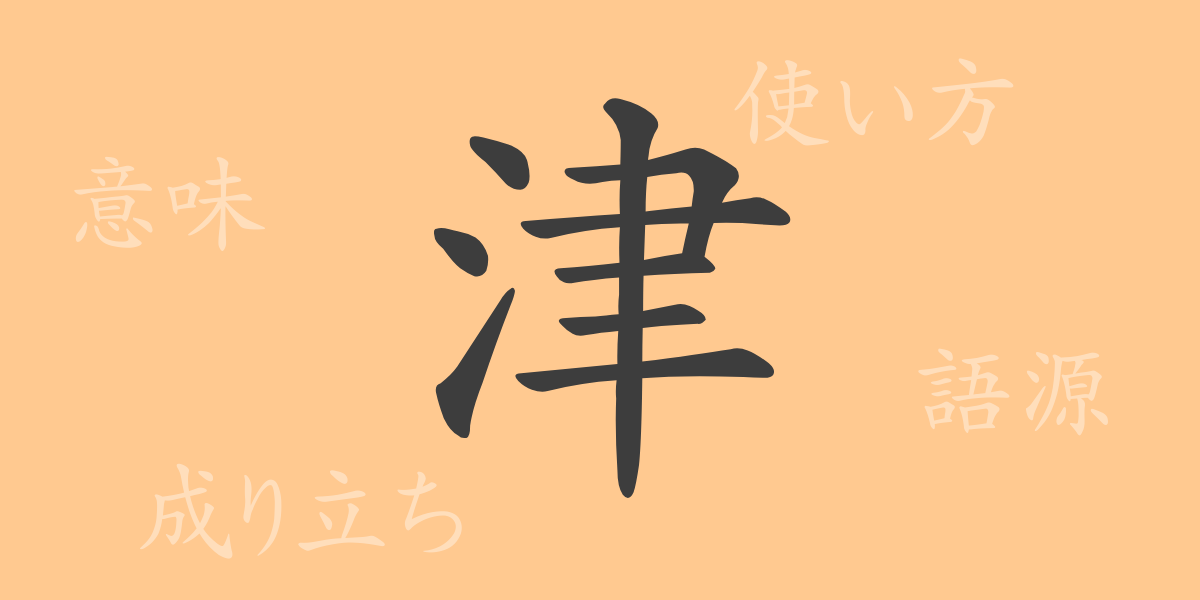The beauty of the Japanese language is also reflected in its delicate characters. One such Kanji, ‘津’ (つ), is frequently used in Japanese place names and is deeply embedded in our daily lives. This article explores the meaning, origins, and role of ‘津’ within Japanese culture.
Origins of 津 (つ)
The Kanji ‘津’ traces its roots back to ancient China, where it denoted a ferry or a crossing place by the water, symbolizing locations bustling with people and goods. In Japan, it has also been used to denote ports and ferry terminals, places where people gather and interact.
Meaning and Usage of 津
‘津’ represents ferry points or harbors. Historically, these were crucial for waterborne transport and served as hubs where people congregated and goods were exchanged. Today, it commonly appears in place names and facility names, preserving its presence across various locations in Japan.
Readings, Stroke Count, and Radical of 津
Basic information about the Kanji ‘津’ is as follows:
- Readings: On’yomi is ‘シン’, Kun’yomi is ‘つ’.
- Stroke Count: Total of 9 strokes.
- Radical: ‘氵’ (さんずい), associated with water.
Phrases, Idioms, and Proverbs Involving 津
There are numerous phrases, idioms, and proverbs that include ‘津’. For example, ‘津波’ (つなみ), meaning tsunami, describes the phenomenon of high sea waves crashing onto land. ‘津々浦々’ (つつうらうら), meaning ‘everywhere in the country’, is used to express thorough coverage or widespread presence across the nation. These expressions reflect the Japanese people’s interaction with nature and their affection for the homeland.
Conclusion on 津
The meaning carried by a single Kanji can be profound, mirroring culture and history. ‘津’ is used in names of places and natural phenomena, continuing to live on in our language. Thus, even seemingly simple Kanji have rich stories behind them, enriching our understanding of Japanese linguistic and cultural landscapes.

























